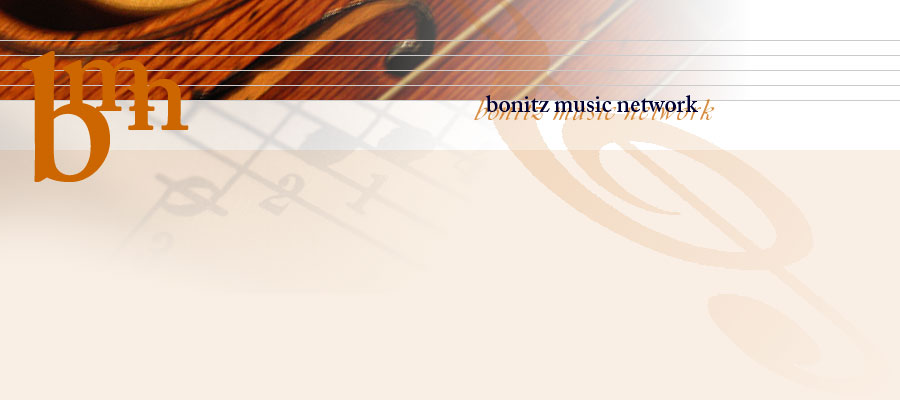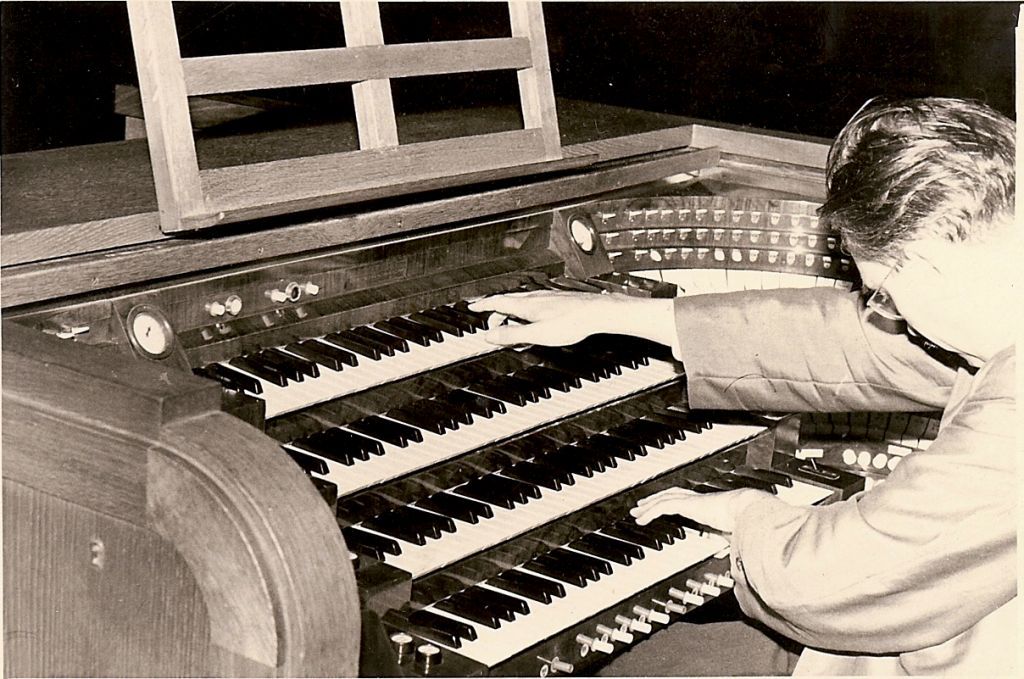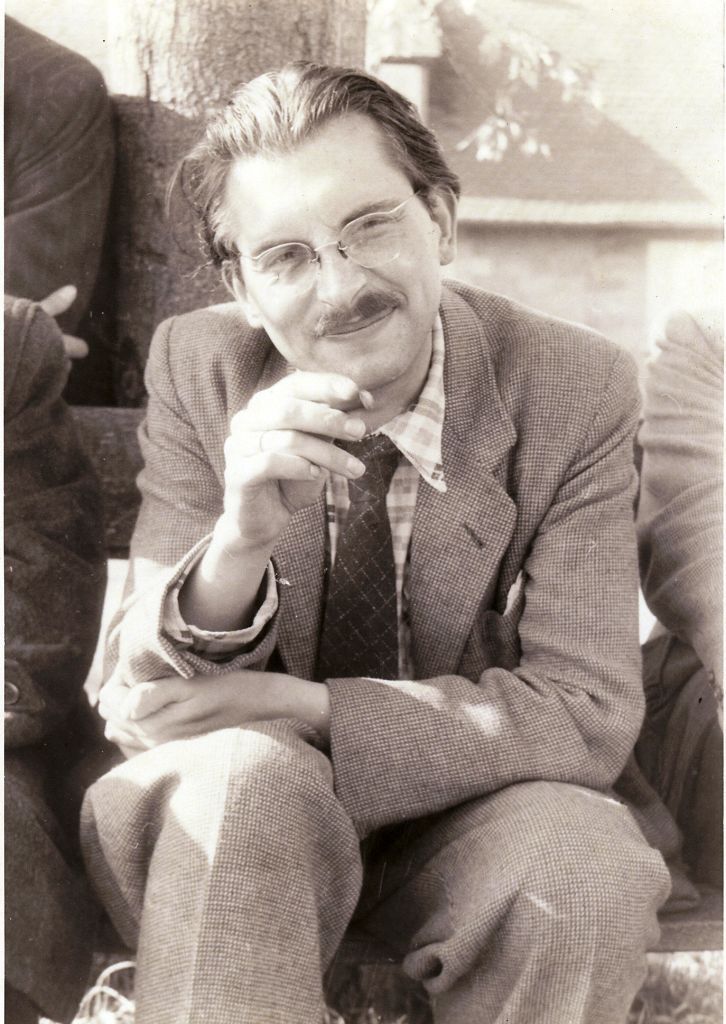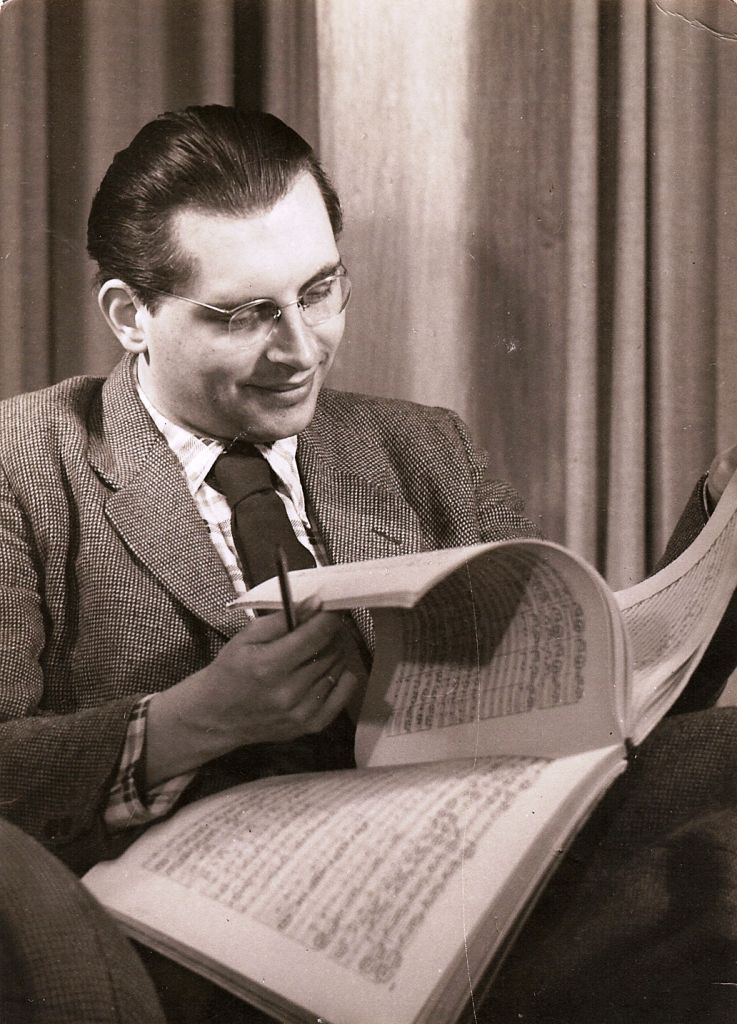
 |
 |
||
Eberhard Bonitz
 Eberhard Bonitz
(1921-1980)
Born in Dresden, Eberhard Bonitz began his studies at the institute for church music of the Evangelisch-Lutherische Kirche Leipzig in 1939. Before long he was given the opportunity to substitute Leipzig’s legendary choirmaster Günter Ramin at the organ and to perform with the famous Thomaner Chor Leipzig under Ramin’s baton. Among his teachers were also renowned protagonists of church music, such as Johann Nepomuk David and Kurt Thomas. After earning his diploma in Leipzig, Bonitz lived in Dresden where converted to Catholicism. From 1941 he held the position of municipal choirmaster in Naila (Upper Franconia) and from 1943 he also taught music at the Annenschule in Dresden.
 At the height of war, in early 1944, Eberhard Bonitz accomplished a deed of greatest merit: he retrieved the splendid Gottfried-Silbermann-organ from Dresden’s Hofkirche in anticipation of Germany’s oncoming downfall and at the encouragement of both the church’s provost Wilhelm Beier and the organ builders Jehmlich. It was Silbermann’s last organ, completed posthumously in 1755. Bonitz boldly dismounted the organ pipes and stored them in a safe place. When Dresden was disastrously bombed, on February 13th 1945, the Hofkirche was gravely damaged: the frame and the wind system of the famous Silbermann-organ fell prey to the fire. The pipes Bonitz had retrieved survived. On Whit Monday, May 30th 1971, the organ was to be heard again for the first time during a pontifical service at the restored Hofkirche. In a festive afternoon concert Eberhard Bonitz, who was the last organist to play it before the inferno, let the re-born instrument resound in all its splendour. At the height of war, in early 1944, Eberhard Bonitz accomplished a deed of greatest merit: he retrieved the splendid Gottfried-Silbermann-organ from Dresden’s Hofkirche in anticipation of Germany’s oncoming downfall and at the encouragement of both the church’s provost Wilhelm Beier and the organ builders Jehmlich. It was Silbermann’s last organ, completed posthumously in 1755. Bonitz boldly dismounted the organ pipes and stored them in a safe place. When Dresden was disastrously bombed, on February 13th 1945, the Hofkirche was gravely damaged: the frame and the wind system of the famous Silbermann-organ fell prey to the fire. The pipes Bonitz had retrieved survived. On Whit Monday, May 30th 1971, the organ was to be heard again for the first time during a pontifical service at the restored Hofkirche. In a festive afternoon concert Eberhard Bonitz, who was the last organist to play it before the inferno, let the re-born instrument resound in all its splendour. After the bombing of Dresden in 1945 Eberhard Bonitz fled with his family to Naila, from where he later relocated to Bamberg. Beside his briefly held position as organist at the University Church in Erlangen, he was active as composer, musician and organ expert. He worked for the organ building company Keller in Selb (Upper Franconia) among others. In 1947 he supervised the restoration of the great organ of the Benedictine Abbey Münsterschwarzach, and in the following year he was appointed head of church music, organist and choirmaster at the collegiate church Ellwangen/Jagst. In 1954 Eberhard Bonitz changed positions and moved with his family to Lingen/Ems, where he was appointed organist and choirmaster, and later music director of the diocese Osnabrück. These positions he held until the end of his life. Moreover he remained the leading organ expert for restoration at the organ building companies Klais Bonn, Stockmann and E.F. Walcker.
 Beside his extensive concert activity Eberhard Bonitz made a name for himself as a composer, namely with his new arrangements of catholic hymns and four-part harmonies, following the Second Vatican Council. Numerous compositions for organ, masses, choir works, songs, as well as works for chamber music were published, just as his scholarly dissertations; for after 1939 Eberhard Bonitz published treatises on the art of organ building and portrayed and analysed many of the various organs he had restored together with renowned organ builders after the war. Beside his extensive concert activity Eberhard Bonitz made a name for himself as a composer, namely with his new arrangements of catholic hymns and four-part harmonies, following the Second Vatican Council. Numerous compositions for organ, masses, choir works, songs, as well as works for chamber music were published, just as his scholarly dissertations; for after 1939 Eberhard Bonitz published treatises on the art of organ building and portrayed and analysed many of the various organs he had restored together with renowned organ builders after the war. |
Link Kirchenmusikalisches Institut Leipzig Hofkirche Dresden Gebr.Jehmlich Orgelbau Dresden Orgel Benediktinerabtei Münsterschwarzach Orgel Stiftskirche Ellwangen/Jagst Orgel St.Bonifatius Lingen/Ems
|
|
|
|
||